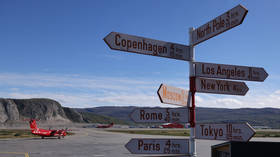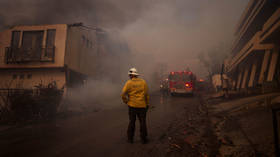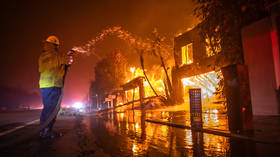Prehistoric Antarctica forest fossils offer scientists ‘glimpse of life before the extinction’
Scientists exploring the frozen wilderness of Antarctica have discovered new fossils that provide further detail about the 260 million-year-old forests that existed there long before dinosaurs roamed the Earth.
During the Antarctic summer, which lasts from late November through January, University of Wisconsin-Milwaukee (UWM) geologists Erik Gulbranson and John Isbell scaled the frozen peaks of the McIntyre Promontory Transantarctic Mountains.
By the time their expedition ended, the pair had uncovered fossil fragments of 13 long deceased trees dating from the end of the Permian Period, some 260 million years ago. This was a period of great flux for our planet, when more than 90 percent of all species on Earth vanished in what’s known as history’s greatest mass extinction event.
'This is crazy': Antarctic supervolcano melting ice sheet from within https://t.co/iN22op5ucspic.twitter.com/VYFcQFFj2x
— RT (@RT_com) November 9, 2017
“This forest is a glimpse of life before the extinction, which can help us understand what caused the event,” Gulbranson said in a university press release.
“People have known about the fossils in Antarctica since the 1910-12 Robert Falcon Scott expedition,” he added. “However, most of Antarctica is still unexplored. Sometimes, you might be the first person to ever climb a particular mountain.”
At the time of the Antarctic forest, Earth was a very different place. The continent was obviously a lot warmer and more humid than it is today. In fact, it wasn’t even its own landmass, instead, forming part of a massive supercontinent called Gondwana which composed of South America, Africa, India, Australia and the Arabian Peninsula.
READ MORE: 'This is crazy': Antarctic supervolcano melting ice sheet from within
Gondwana was home to a variety of mosses, ferns and an extinct plant called Glossopteris, and the pair think it’s likely that the prehistoric forest stretched across the entirety of the supercontinent.
“This plant group must have been capable of surviving and thriving in a variety of environments,” Gulbranson said. “It’s extremely rare, even today, for a group to appear across nearly an entire hemisphere of the globe.”












